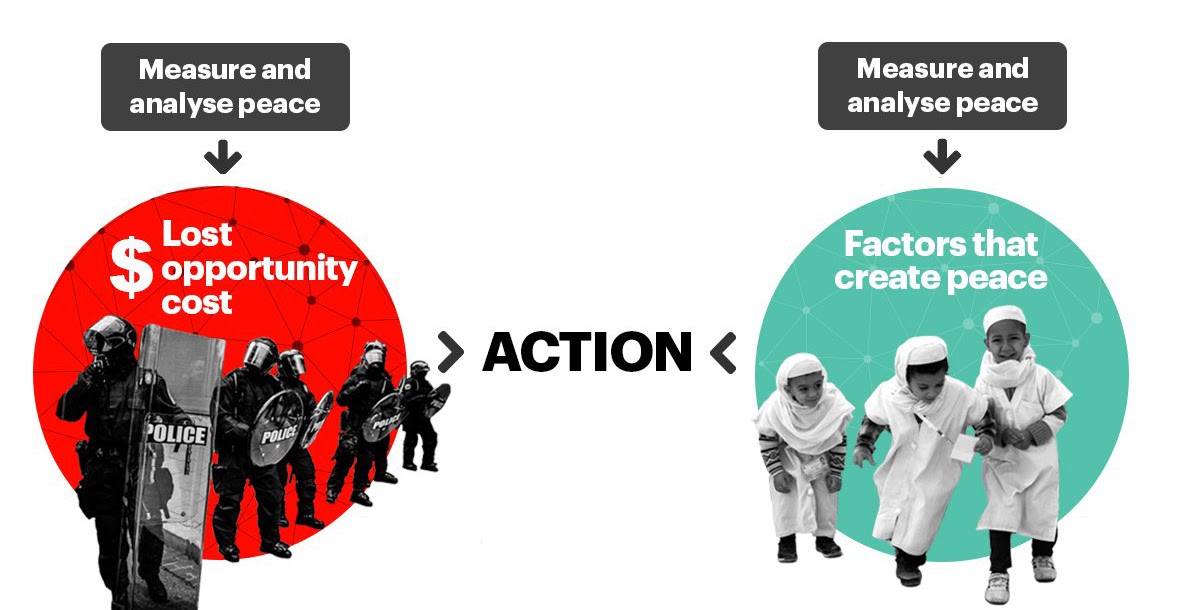IEP’s definition of Negative Peace is understood as ‘the absence of violence or fear of violence — an intuitive definition that many agree with, and one which enables us to measure peace more easily. Measures of Negative Peace are the foundation of IEP’s flagship product, the Global Peace Index. However, while the Global Peace Index tells us how peaceful a country is, it doesn’t tell us what or where we should be investing in to strengthen or maintain levels of peace. This leads us to Positive Peace, derived from the data contained within the Global Peace Index. Positive Peace provides a framework to understand and address the many complex challenges the world faces.
Positive Peace is transformational in that it is a cross-cutting factor for progress, making it easier for businesses to sell, entrepreneurs and scientists to innovate, individuals to produce, and governments to effectively regulate. In addition to the absence of violence, Positive Peace is also associated with many other social characteristics that are considered desirable, including better economic outcomes, measures of well-being, levels of inclusiveness and environmental performance.
A parallel can be drawn with medical science; the study of pathology has led to numerous breakthroughs in our understanding of how to treat and cure disease. However, it was only when medical science turned its focus to the study of healthy human beings that we understood what we needed to do to stay healthy. This could only be learned by studying what was working.

Peace. If you can’t measure it, how can you understand it? How do you know whether your actions are helping or hindering you in achieving your goals?
Steve Killelea, Founder and Executive Chairman of the Institute for Economics & Peace, established the Global Peace Index after a 2005 expedition to North East Kivu in the Democratic Republic of Congo. In his debut book, Peace in the Age of Chaos, Steve asks, “What were the causes of such a violent social context? There was no lack of emotional strength among the people; indeed, they showed extraordinary levels of resilience at times. So why was there such an absence of peace?“
Driven by these burning questions, he began to investigate whether studies existed that ranked the countries of the world according to levels of peace — to his astonishment, he could find nothing. This discovery led Steve to a disturbing conclusion — If a simple businessman such as himself could not find an accurate and easy-to-understand measure of countries according to their peacefulness, then how well did the global community genuinely understand peace?
After all, if you can’t measure something, then how can you truly understand it?
Of course, the answer to this question is simple — you can’t. Without an accurate and dependable measure, authentic understanding is impossible. Similarly, without a reliable measurement of peace — one that synthesizes quantitative and qualitative indicators to provide a holistic image of peace as a system — an understanding of peace is unattainable, and efforts to create and sustain peace are doomed to futility.
By measuring negative peace – through the Global Peace Index – it allows us to analyse the factors that create peace, the factors that we want to see in our societies – captured by the Positive Peace Index.
This excerpt is taken from the IEP Peace Academy. To take the free course, please visit Positive Peace Academy and sign up now.